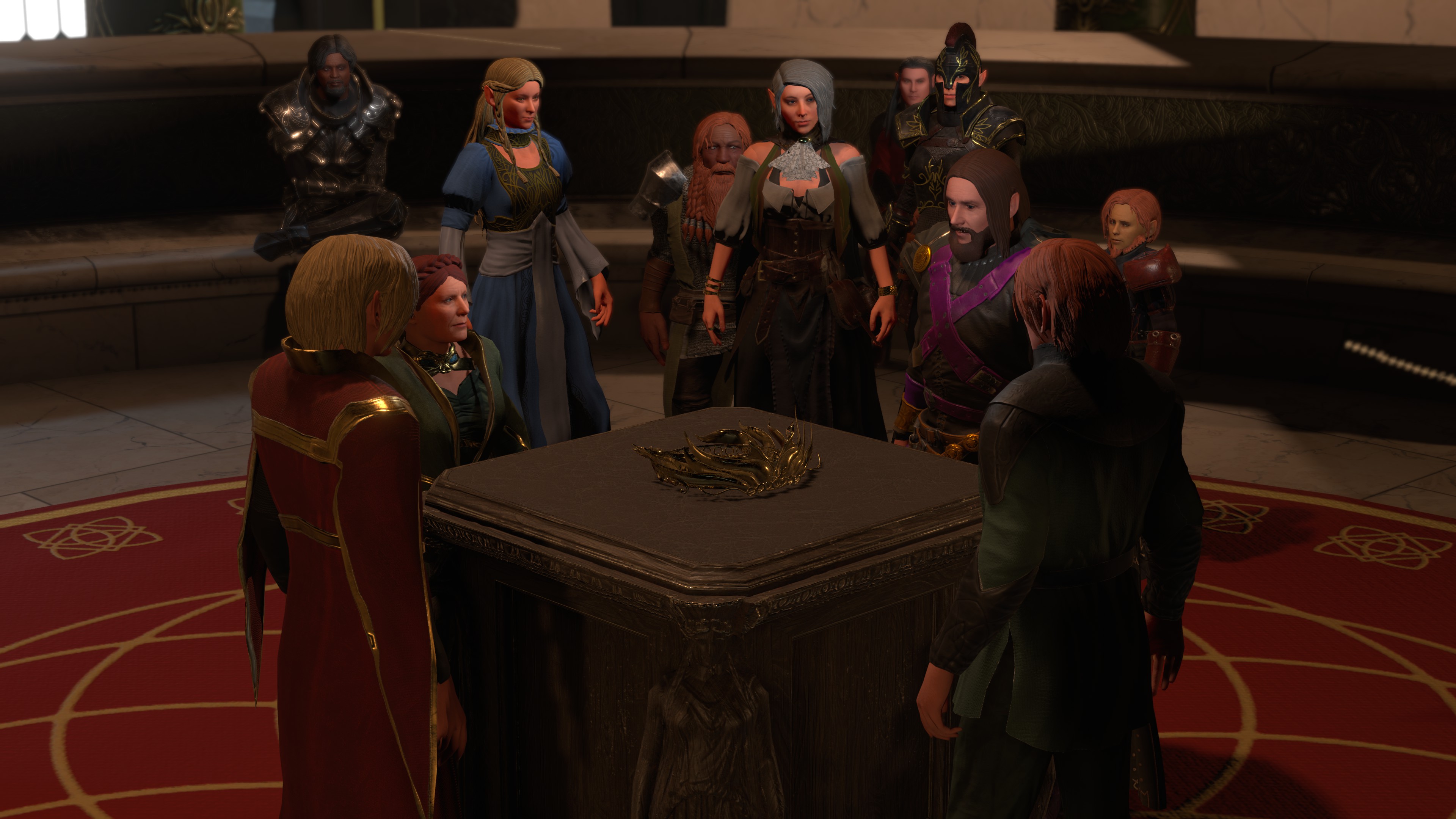Our Verdict
Solasta's storytelling may not be up to much, but its tactical combat and accessible approach to D&D rules make it worth considering for CRPG fans.
PC Gamer's got your back
What is it? Authentic D&D RPG with great dungeons but dodgy writing.
Expect to pay $40/£31
Developer Tactical Adventures
Publisher Tactical Adventures
Multiplayer? No
Reviewed on AMD Ryzen 5 3600, Nvidia GeForce 2080 Super, 32 GB RAM, caffeine and late nights.
Link Official site
Whatever else Solasta may be, you can't fault its authenticity. Tactical Adventures' RPG is the truest virtual representation of a D&D ruleset since Neverwinter Nights. Armour classes, spell preparation, wincing at a bad dice-roll, it all brings back fond, occasionally agonising memories of BioWare's early games. The Fifth Edition rules form the backbone of this sprawling RPG, filled with giant, puzzle-y dungeons and challenging tactical combat. It's a decent first effort from the small French studio, albeit one that suffers from clumsy and derivative storytelling.
That story sees you control four adventurers recruited as Deputies of the Council, an organisation representing various factions across the realm of Solasta. Initially dispatched to investigate a beleaguered border fort on the frontier of the Badlands (think Mordor, but in the West rather the East), you eventually stumble upon an ancient artefact known as the Crown of the Magister. But the Crown is incomplete, missing several magical jewels that can make it powerful enough to open rifts between worlds. No prizes for guessing what your party will be doing for the next forty-ish hours.
I'll get to the story's issues later, but first I want to focus on what Solasta does best—making strict D&D rules accessible. As someone who found Baldur's Gate rather intimidating, I credit Solasta for its teaching skill. The first few hours of Crown of the Magister act as a soft tutorial that slickly introduces you to the Fifth Edition rules, from longstanding mechanics like spell-selection and the nuances of resting, to 5e-specific rules such as advantage and disadvantage rolls. Whether exploring or in combat, I always knew what was happening and why it happened that way.
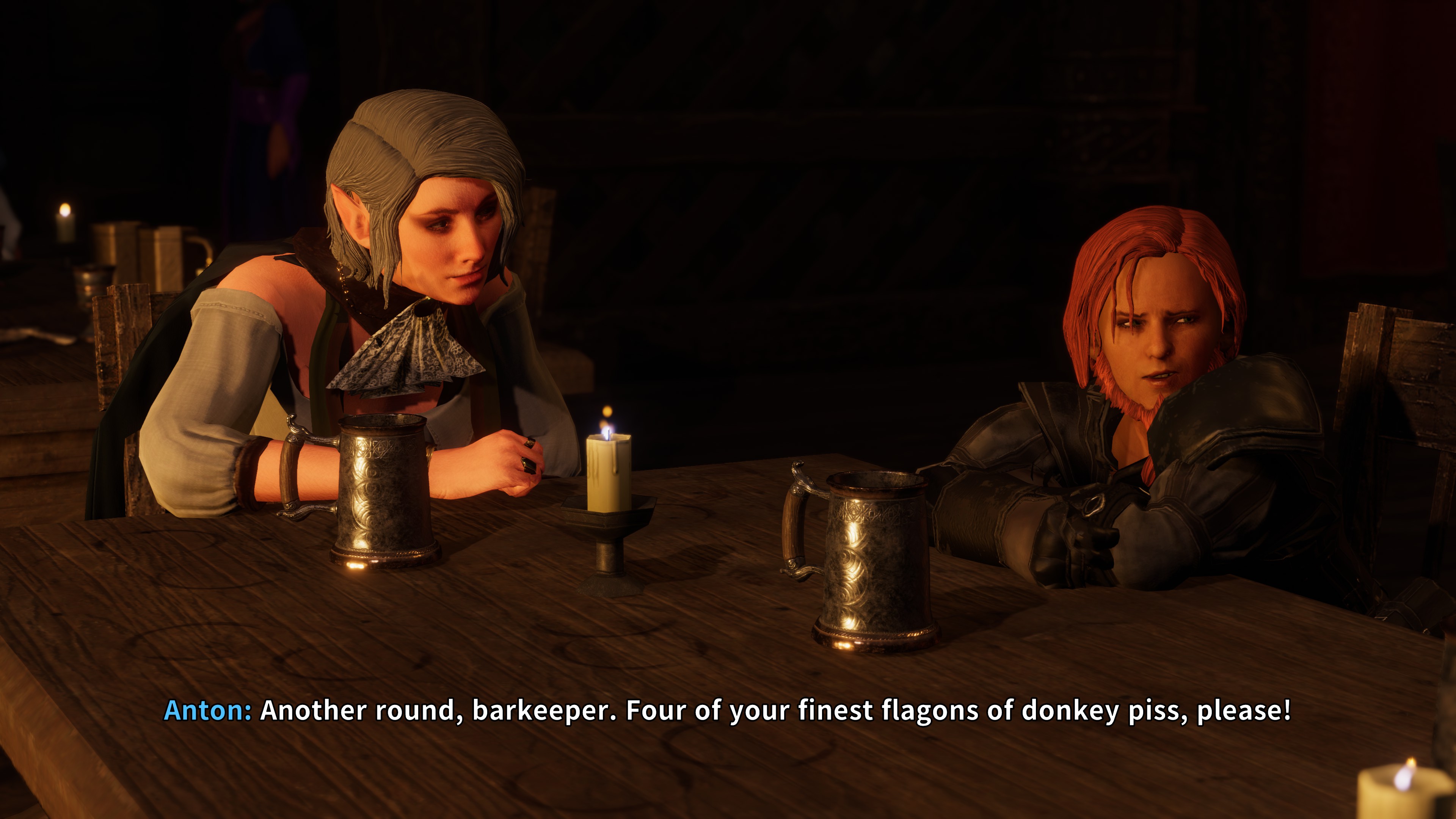
What helps is Solasta structures its ruleset in familiar ways. Combat, for example, borrows from Firaxis' X-COM, both in its representation of the battlefield, and in certain mechanics. By default, characters can move and take one action, or dash, spending their action to move further. Solasta also features its own equivalent of Overwatch, where you can schedule an action to trigger when an enemy moves into range. This is particularly useful for ensuring melee-focussed characters don't waste their actions.
Combat is where you'll spend most of your time in Solasta, and unsurprisingly it's where the game is most robust. While the stringent D&D ruleset means you shouldn't expect the wild creativity of other recents CRPGs such as Divinity: Original Sin 2, Solasta's fights are nonetheless both challenging and satisfying. You'll grin when your fighter's greatsword crunches into an orc's face, and wince when that orc's axe whooshes through the air, missing your wizard by a hair's breadth. Spells are suitably colourful, ranging from explosive elemental incantations like Fireball and Lightning Bolt, to amusing hexes like Hideous Laughter, which cripples your enemy's diaphragm more effectively than an episode of Taskmaster.
On the tactical side, most fights will see you outnumbered, so victory is about maximising actions and using both your party's skills and the environment to your advantage. Much of this is familiar stuff, getting your rogue behind enemies for sneak attacks, crowding enemies together so your wizard can incinerate them with AoE spells. But there are subtler strategies too. Fighters equipped with a shield can attempt to block incoming attacks on companions, making formation an important consideration. Indeed, Opportunity rolls are a major factor of Solasta's combat. Assaulted spellcasters can quickly conjure a shield to deflect attacks, while Paladins can burn spell-slots to Smite enemies, dealing extra damage.

Beyond these mechanics are broader, more unusual systems that bring the environment into play. You can crush enemies by pushing a conveniently placed rock off a ledge or knocking a chandelier off a ceiling, for example. Light is a particularly important factor. Fighting in darkness will add a visibility disadvantage to your combat rolls, so it's important to use torches or spells to illuminate caves and dungeons. It all makes for exciting, story-like combat, full of canny tricks and last-minute dodges.
Combat is where you'll spend most of your time in Solasta, and unsurprisingly it's where the game is most robust.
Speaking of dungeons, Solasta's are vast shadowy mazes that are fantastic to explore. Although the campaign opens up more in its second half, Solasta is a fairly linear RPG, focussing on a handful of major locations that each take hours to explore. Some dungeons are heavily puzzle-oriented, with much of your time spent figuring out how to traverse a series of platforms or navigate a sequence of portals. Others are more open-ended. A prime example of this is Dark Castle, the point where Solasta really lets you off the lead. This vast fortress is home to a powerful Necromancer and guarded by all manner of undead nasties. You can fight your way through the front gate if you like, but you can also try to sneak in through a secret entrance, or even talk your way past the apprentice who guards the castle's outer hallways.
Elsewhere, you'll explore ancient libraries, glittering monasteries filled with translucent spectres, and blasted volcanic landscapes. Solasta is a decent looking RPG, although many NPCs seem to have been dragged through the character creator backwards, with false-looking beards and hairstyles that resemble wigs. Dwarves have particular trouble keeping their facial hair on, with all the plaits and rings apparently dragging their beards right off their chins.
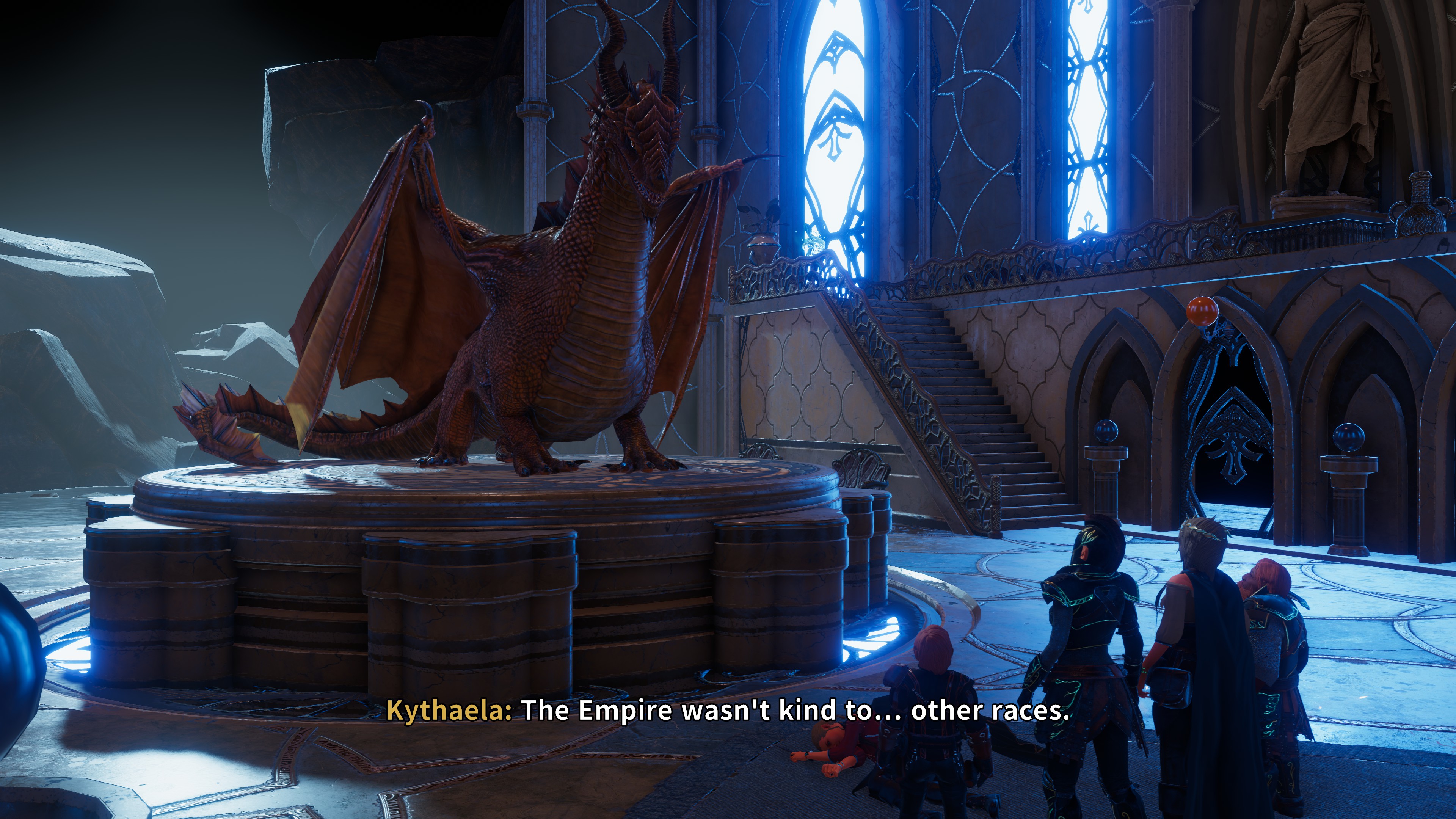
That said, the character creator itself is impressive. Solasta is a true party RPG. While I opted to play with predesigned characters to maximise the chance of a balanced experience, the game encourages you to create your own heroic foursome. There are five races and six classes to choose from, but you can also choose your character's backgrounds, each of which comes with several 'personality flags', such as kindness, cynical, greedy etc. These flags affect your character's responses during dialogue and crucial choices. A character with the trait of Pragmatism might be more likely to talk their way out of a situation for example, while a character who is naturally violent will always prefer a fight.
The differing personalities manifest through a slick dialogue system that lets any of your four party members respond to NPCs. Most responses are cosmetic, but there are some key decisions that dictate whether a quest ends in a conversation or a bloodbath. It's neat to see your characters responding according to personalities you created for them, although the effect of the system is diminished by the dialogue itself.
Solasta's writing isn't terrible, but it is often ham-fisted and has an unusual syntax that means conversations don't flow as they should, with character responses to new information or situations always feeling slightly off. The script is further undermined by the voice acting, which really is terrible. Almost every character you meet sounds wrong, either because the acting itself falls flat, or because the chosen voice sounds weird coming out of that character's mouth. One of the actresses, who voiced two of my party characters, sounds almost identical to Mrs Rabbit from Peppa Pig, and the moment I realised this I couldn't take anything either of them said seriously.
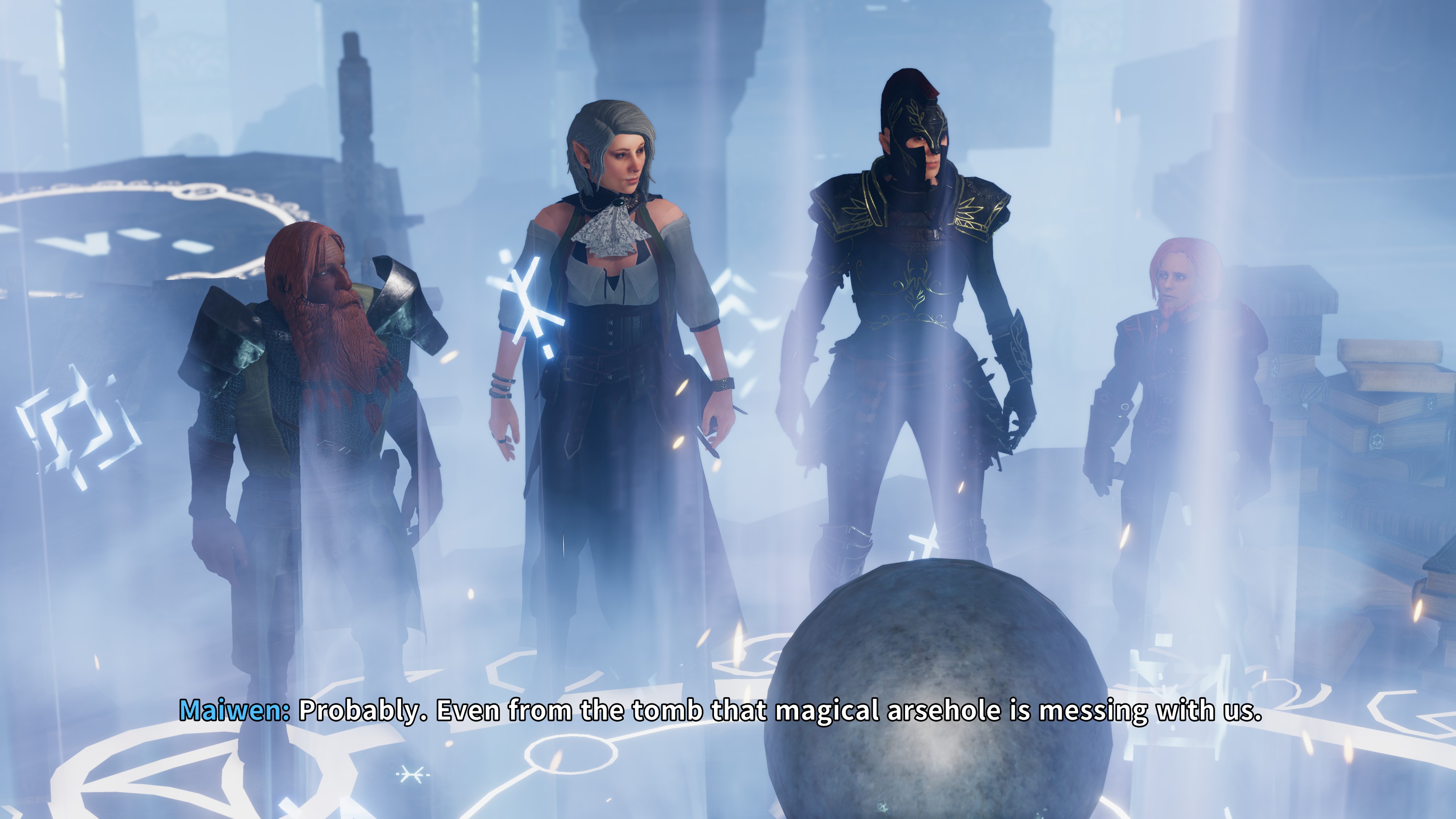
With a better script and more charismatic performances, the background and personality system would be something of a standout feature. Without that, Solasta doesn't have much to differentiate it from other fantasy CRPGs. The story it tells has been done a thousand times over. There are a handful of intriguing ideas, such as an unusual twist on the Sleeping Beauty fairytale, and a primary foe that can disguise itself as anyone, which naturally lends itself to twists and a general atmosphere of suspicion. But again, these ideas are undermined by the writing and voice acting.
One of the actresses, who voiced two of my party characters, sounds almost identical to Mrs Rabbit from Peppa Pig.
Meanwhile, the handful of available side-quests are rudimentary and feel distinctly tacked-on. This is especially noticeable with the recently added character side-quests, more personal stories attached to your party members. There are virtually no hints toward your character histories for the first twenty hours, then all these stories suddenly appear at once.
There are a couple of smaller features I appreciate, such as the Scavengers Guild. This band of professional looters go into a dungeon after you've cleared it of monsters, collecting all the weapons and bits of armour you left behind and selling it for you, giving you a cut of the profits. It saves you lugging a dozen shortswords back to Caer Clyften whenever you finish a dungeon, making it a neat quality-of-life feature.
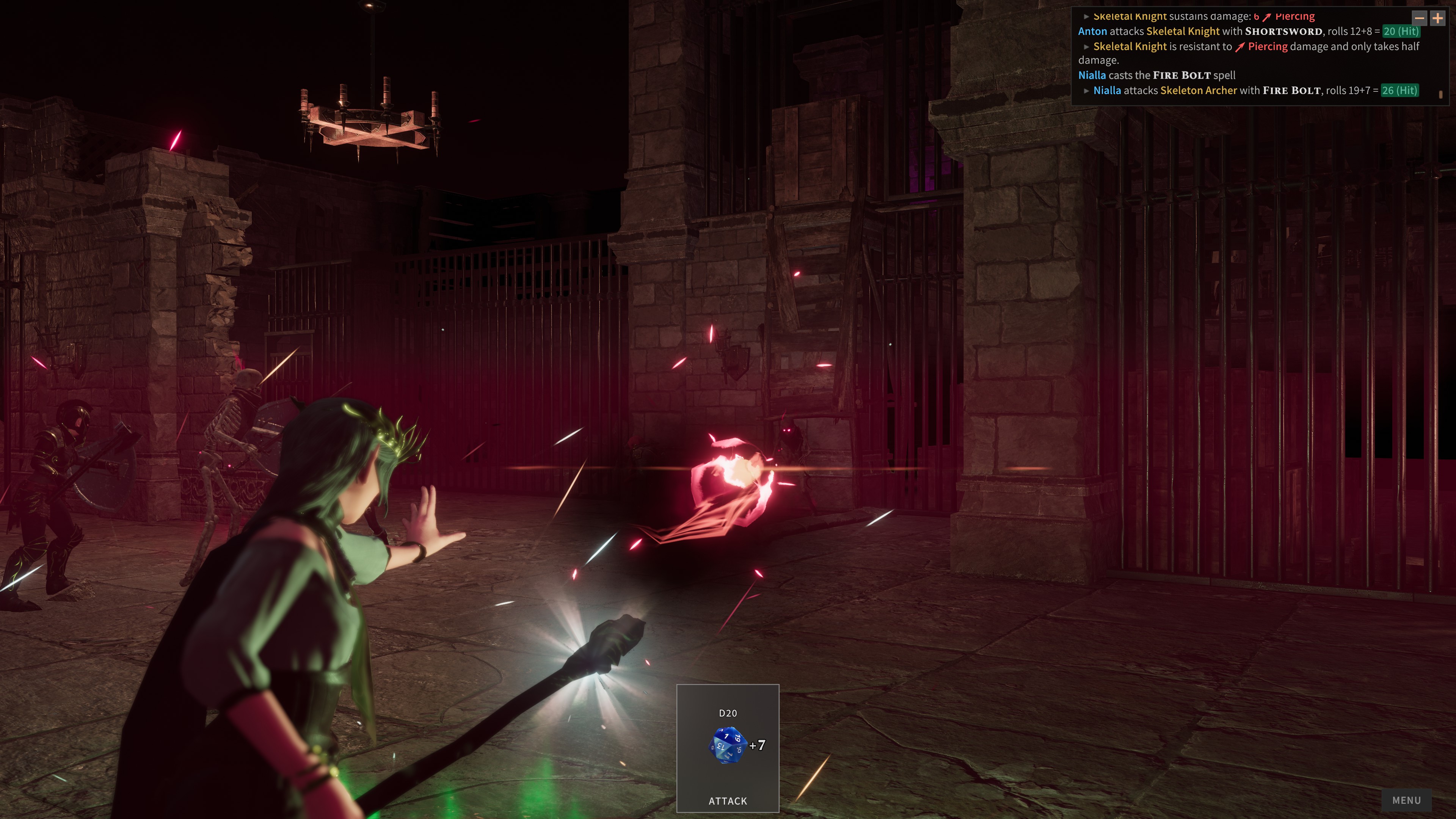
The one major addition I'm yet to discuss is Solasta's Dungeon Maker, which as the name suggests, lets you make your own tile-based caves, crypts, and castles for your party to explore. It's a slick and accessible tool. The drag and drop function lets you knock out basic room layouts in minutes, but it has enough depth and precision to allow for more intensely detailed dungeons too. That said, it isn't something you would buy Solasta specifically for.
In the end, what maintained my interest in Solasta was a desire to see what lay around the next corner. It may not be the most original or scintillatingly written RPG, but there's enough variety in the dungeons to keep you intrigued, while the broad array of enemies means combat remains interesting through most of the campaign. It also gets D&D right while providing a gentle onramp for newcomers, which in and of itself is no small feat.
Solasta's storytelling may not be up to much, but its tactical combat and accessible approach to D&D rules make it worth considering for CRPG fans.
Rick has been fascinated by PC gaming since he was seven years old, when he used to sneak into his dad's home office for covert sessions of Doom. He grew up on a diet of similarly unsuitable games, with favourites including Quake, Thief, Half-Life and Deus Ex. Between 2013 and 2022, Rick was games editor of Custom PC magazine and associated website bit-tech.net. But he's always kept one foot in freelance games journalism, writing for publications like Edge, Eurogamer, the Guardian and, naturally, PC Gamer. While he'll play anything that can be controlled with a keyboard and mouse, he has a particular passion for first-person shooters and immersive sims.
